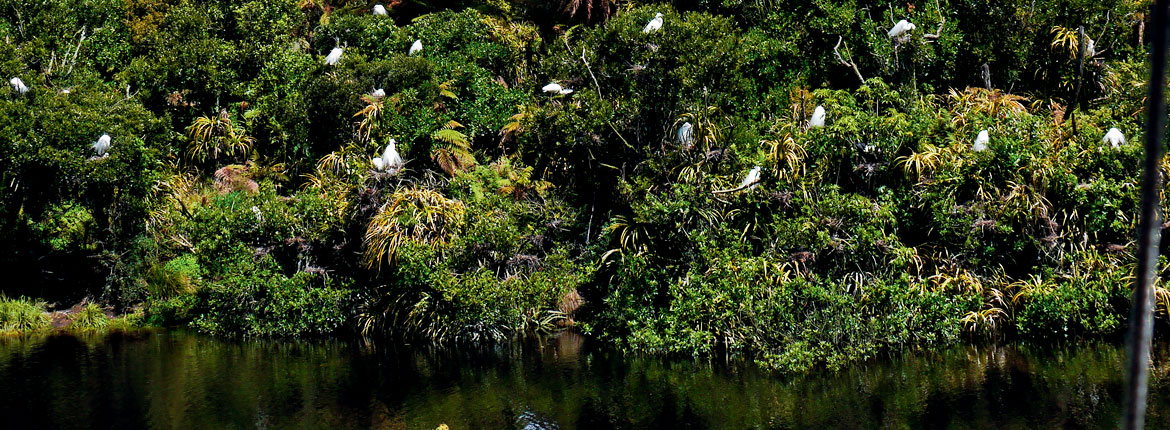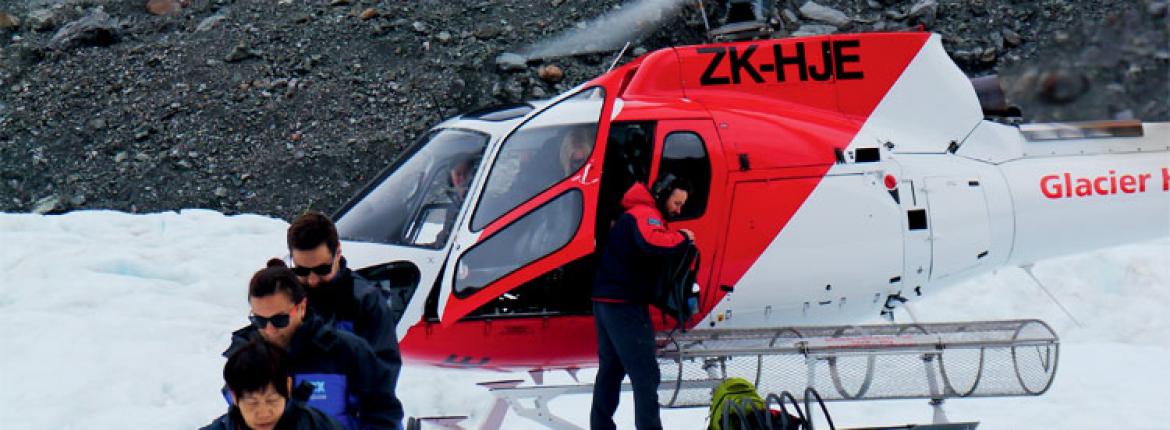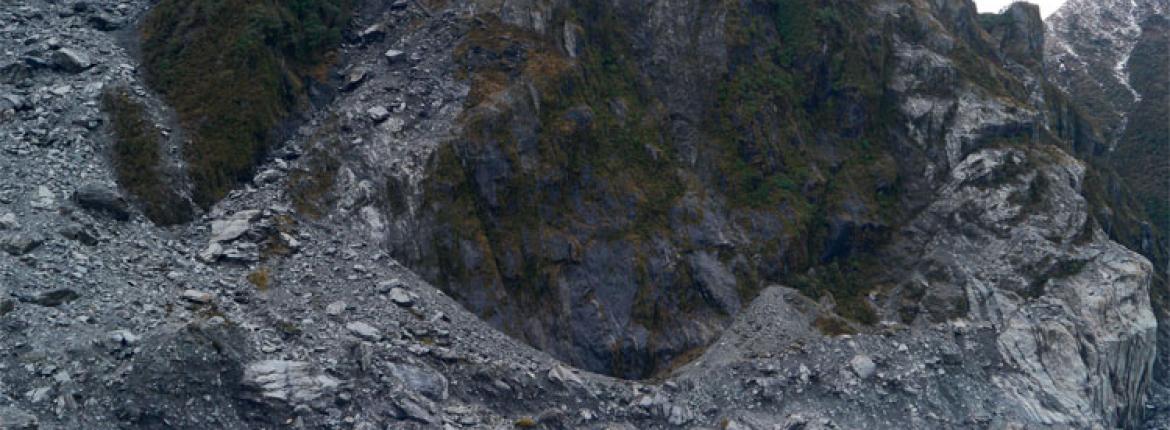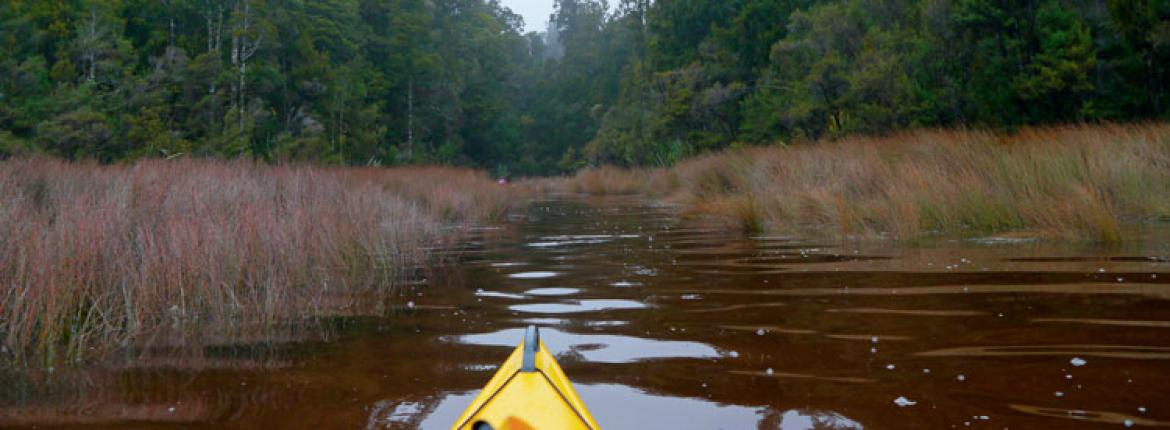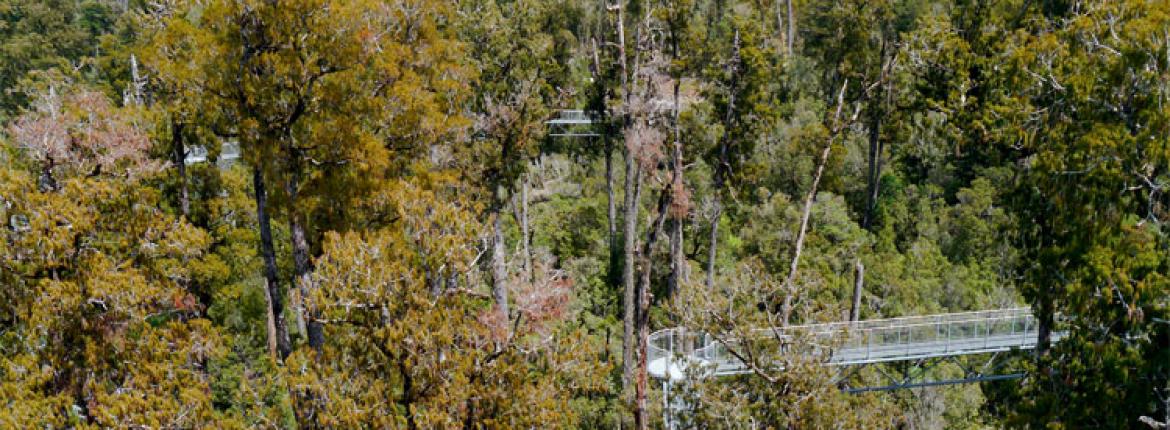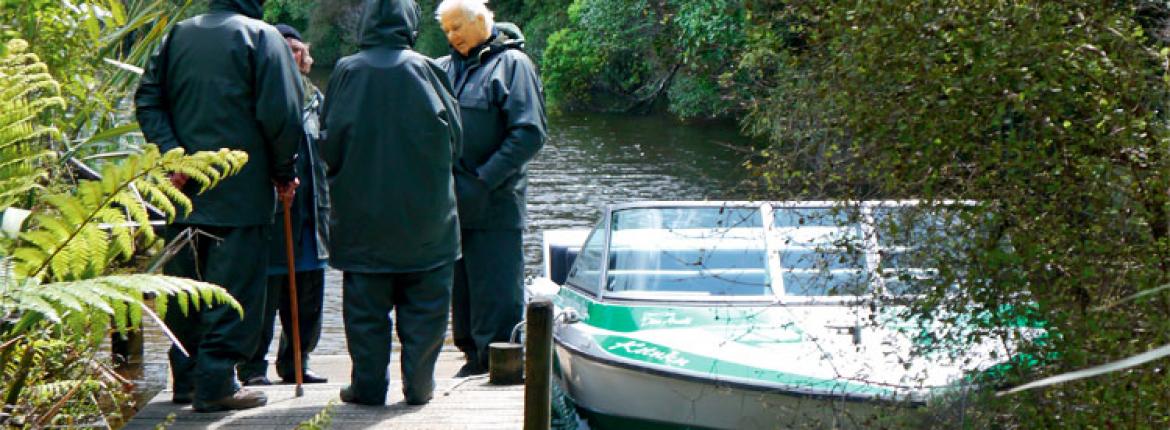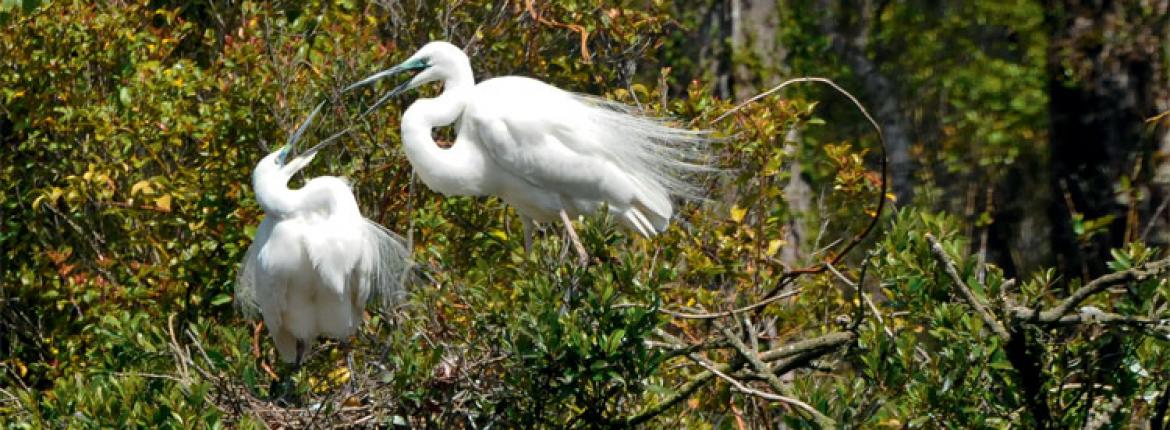Moody is a good word for this part of the country. Low-slung clouds obscure the landscape and, as we drive closer it turns to rain, veiling the steeply rising hills. The slopes are blanketed in thick bush; the cuttings we move through are mossy, hanging gardens.
Now and then the road narrows to a one-lane bridge leading over stony river beds to broad vistas and intriguing valleys.
We’re down south. Having flown from Christchurch over the Southern Alps, we’ve collected a rental car, snatched coffee in Hokitika and made it to Whataroa in time to join a tour to the White Heron Sanctuary.
A small group of us are escorted from Whataroa to a nearby river bank where we kit up in wet weather gear and board a jet boat for a blast toward the coast, to a mysterious little wharf.
After a short walk through kahikatea forest, we come to a hide from which we can spy, across the river, nesting kotuku. It’s a surreal sight. Elegant, other-worldly creatures litter the dark bush, their bright white bodies stark, their lacy wings and s-necks tucked in until their mates return and they stretch out and dance in romantic greeting.
As the birds shuffle about in their unlikely, shabby nests, chicks are revealed. Some are urgent tiny bald things, others are fluffy and take up most of the nest space – all are ravenous. Royal spoonbills and cormorants nest in branches around the heron nests, also busy with the never-ending business of feeding their young. It’s a riot of activity. They’re oblivious to us watching entranced through binoculars, our cameras busy, reluctant to leave.
It is a beautiful forest trail and good to be in the thick of it. And bush in these parts is thick.
But we need to get back on the road, as we’re booked for a night in Franz Josef at Te Waonui Forest Retreat, a calm, chic hotel with window views filled with bush and, from the dining room, the glacier.
We meet the hotel manager for an exceptionally nice meal. Because overseas visitors tend to visit in summer, his hotel closes in winter which is a shame, he says, because the weather is often calmer in winter. Glacier country gets bright clear days and being so close to the coast, it’s not too cold. He suggests New Zealanders visit in winter to truly appreciate the peace and solitude the area does so well. They need to stay a couple of nights, at least, he says – and I agree.
There is a lot to do here: seeing kiwi in the West Coast Wildlife Centre and, behind the scenes, gaining an understanding of efforts being made to rescue the local kiwi. Then there are outdoor hot pools, right next to Te Waonui. And I spend time at Te Koha Gallery, where people can carve personal mementos from greenstone. The gallery is busy with young tourists with foreign accents on the afternoon I spend grinding a nub of stone into something rounder and smaller. Other artists opt to use templates of Maori-inspired design, with some really impressive results.
And, of course, there are the star attractions: the glaciers.
The best way to visit the glaciers is by helicopter, because the ice has receded to the stage that it’s quite a slog up and, as it’s dangerous, must be with a guide. Plus, flying up is excellent fun. As the chopper swoops and dips to reveal more and more of the spectacular Fox Glacier and its surrounding theatrical mountains, I grin like a mad woman. Once on the ice, fitted with wet weather gear, boots and crampons provided by the HeliHike operator, a guide leads the way over knobbly, pocked terrain, into icy caves and small, blue-lit crevasses.
Back in Fox the bush beckons; we ride mountain bikes from the township up to a high-walled valley cut by the glacier for another view of the terminal face. It is a beautiful forest trail and good to be in the thick of it. And bush in these parts is thick; thick and green and very wet. As several locals point out, you can’t have rainforest without rain and we see a lot of rainforest on this road trip.
Rain meant that another highlight of the area – Lake Matheson – will need to be experienced another day. The mountains that famously reflect in the lake hide behind an unshifting veil. Some stalwart tourists walk the lake loop in the rain; we settle in to the right-there, top-notch Matheson Café for a meal.
The next morning, Okarito. Here are a handful of homes, a camping ground and historic buildings including the Donavan’s Store built 150 years ago and now a social centre with a tiny library. Another oldie, on Okarito wharf, is a cute, gappy shed with history hanging in stories and photos on its walls.
From nearby we launch hired kayaks and paddle out onto the quiet lagoon. When the tide’s low, kayakers have to make an effort to follow the deepest channels, keeping markers to port, that sort of thing, but at high tide we meander without a care. We float close to low-lying islands with red-hued reeds, waving grasses and flaxes, birds making quiet noises but staying out of sight. Black swans dot about calligraphically – many of them, whole paragraphs of them – and sometimes a gang takes off with a scribbly effect, their wings edged with white flashing against the silver page.
Kotuku feed in this lagoon; we see several in flight. We cruise past numbered signs referring to a nature trail guide provided by DOC to identify birds, reveal the intricacies of New Zealand’s largest, untouched wetland and to better understand what a treasure the lagoon is in the grand scheme of ecological things. On the inland side, kahikatea and rimu grow. We paddle down a narrow waterway to where a tumbling waterfall streaks pale against the darkly forested bank. The slight rain doesn’t matter; all the gear that comes with the kayaks keeps us warm and dry. It is a meditative experience, floating about on that moody estuary, wrapped in serenity.
We head back to Franz Josef for another night, this time at the Scenic Hotel, and spend time by the fire pre-dinner counting the exclamations of joy and surprise as guests discover the jar of marshmallows parked on the hearth. It is raining heavily now and it is delicious to be cosy, indoors, amongst the buzz of the hotel.
North of Franz the next morning, Andris Apse’s photography gallery beckons. His images of the area capture dramatically the extremes of the local land, sea and sky. Further north, at Ross, another gallery – this one featuring ceramic craft and paintings – provides a stimulating break. I buy a pottery mug. Just south of Hokitika we turn inland for a walk on boardwalks in the sky at Treetops.
Among the crowns of the forest giants I soak in the expansive, peaceful moodiness of the coast and prepare, reluctantly, for the journey home.
Kotuku nest from September to March; other nature tours from Whataroa are available year round.
Reported by Kathryn Webster for our AA Directions Autumn 2024 issue

